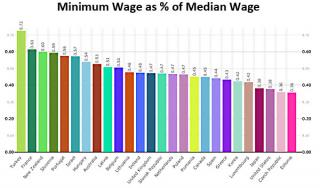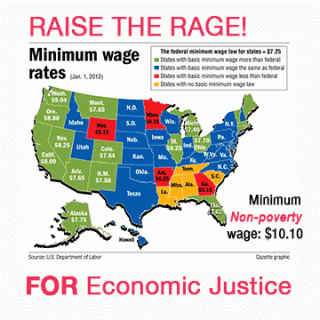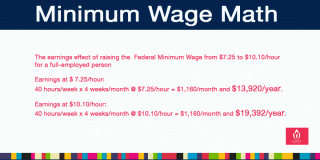The Fight for a Fair Wage Goes On
By Ted Resnikoff
The Math Adds Up – the Politics Still Don’t
The Federal Minimum Wage has not risen since 2009 although the Cost of Living (COL) in the United States has increased by 10% over the same period. Studies show that in real terms the purchasing power of the Middle Class has decreased since 1970 (Read this post by Karin Kamp on BillMoyers.com to understand how.) The people who are most hurt by the divergence between wages and COL are those who work for minimum wage.
The Unitarian Universalist Association (UUA) believes in Economic Justice — don’t you? Together we transform belief into reality
Raising the minimum wage may lift some people out of poverty, but not all. The current minimum wage of $7.25/hour means the earnings of a fully employed worker (full-time for the entire year) exceeds the poverty level only if that worker is in a single person household. When the worker’s earnings are the only source of financial support for a household comprising more than one person, household earnings are below the poverty threshold. While even the current proposal to raise the Minimum Wage to $10.10/hour is inadequate (it would lift a two-person, single income household out of poverty, yet three-person or more households would still be below the poverty line), political opposition to raising the Minimum Wage remains steadfast.
(READ “Senate Republicans Block Minimum Wage Bill” (Huffington Post). In a preliminary vote, Senate Democrats were unable to clear the 60-vote threshold needed to forestall a possible Republican filibuster of a bill to raise the Federal Minimum Wage to $10.10 per hour.)
Minimum Wage Math. The earnings effect of raising the Federal Minimum Wage from $7.25 to $10.10/hour for a full-employed person
Federal Poverty Guidelines ( for the lower 48 states – COL is higher in Alaska and Hawaii)
Household of 1: $11,670 | Family of 2: $15,730 | Family of 3: $19,790 | Family of 4: $23,850
Need more convincing? The COL is not the same for everybody everywhere and tends to be higher in wealthier countries.This graph from Mother Jones magazine shows the minimum wage as a percentage of the median wage in given countries. The United States ranks near the bottom of ranked countries. The median wage and the cost of living are in a real sense related as free market economies adjust price on the basis of demand. Simply stated: when too few wage earners can afford something its price tends to go down; when too many wage earners can afford something its price tends to go up.
Countries such as the United States, where the gap between the media wage and the minimum wage is large puts additional pressure for minimum wage earners to provide the basic needs such as housing, food, clothing and health care for themselves and their family.



